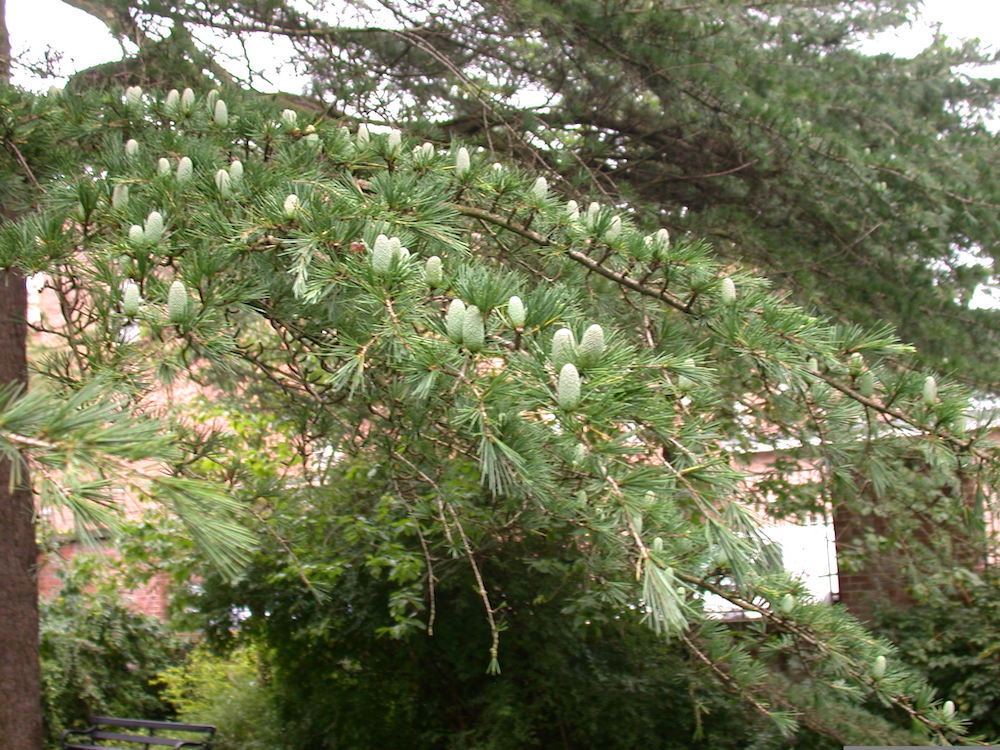Cedrus deodara (Roxb. ex D.Don) G.Don
Deodar
The tree tag number relates to the black tree-maintenance tags, usually fixed on the trunk, 2 to 3m above ground level.
Currently, three Cedrus species are listed: the deodar, the Atlas Cedar and the cedar of Lebanon, which now includes the Cyprus cedar; these are the true cedars and they are all from the Old World (the word cedar is confusingly applied to many other conifers). The deodar is from the Western Himalayas. Our deodar in the Botanic Gardens shown here is on the north side of the main entrance path from the Stranmillis gate. The deodar can usually be distinguished at a distance from other cedars by the drooping tips of the branches. The needles are arranged spirally on young twigs, but most of the needles are held in bunches on very short stubby branches. This arrangement is similar to the larches. Unlike larches however, cedars are evergreen not deciduous. The cones are produced in autumn and as with all cedars, the cones break up and shed their seed while still attached to the tree, which pine cones don’t do.






Photos taken in Belfast Botanic Gardens in 2013. Copyright: Friends of Belfast Botanic Gardens.
